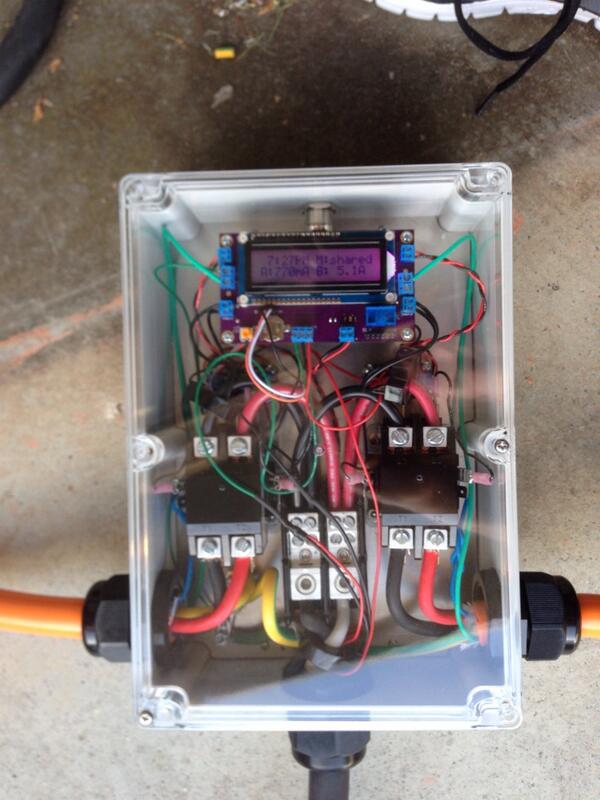Devin
Well-known member
I have the 60A line coming to a subpanel in the garage, and the 20 and 40 are split from that panel (20 goes up and over, 40 goes 2ft to the AV EVSE-RS). I'd only have to replace the 2ft of wire coming from the subpanel - no problem there. This was all permitted and installed in 2011 for EVSE use only, so I'm not worried about supply side at all.nsayer said:You're right about the 48A combined limit, but there's no particular reason you can't achieve the 48A per vehicle as well, as long as you get contactors and J1772 cables and plugs that are up to it.
The NEC says that for a 60A circuit you're going to need to run AWG 4 copper wire. If you don't have that in place already, that'll be a necessary prerequisite. You'll need to run that all the way into the bus module inside the Hydra (that's no problem, though. A Cooper-Bussman 16220-2 is what I specify, and it can go all the way to AWG 4 on the load side and 2/0 on the line side). On the line side, I believe AWG 8 would be enough to go from the bus module to the contactors, and then the other side of the contactors would be attached directly to your J1772 cables.
Getting 50A rated contactors is the next step, and if they don't have a 12VDC coil, then you'll need pilot relays to drive them.
If it's easy enough to source the 48/50A parts for each head then that makes sense. I assume then that the 48A limit is imposed in software and since there'd be a 48A limit on the input side of the hydra then that would be the failsafe should the controller fail and attempt to feed two cars at max amperage.
I'm not an electrical engineer, but I pretty much understand everything said, so am trying to determine what I need to brush up on before attempting a project like this. Any particular suggestions?




